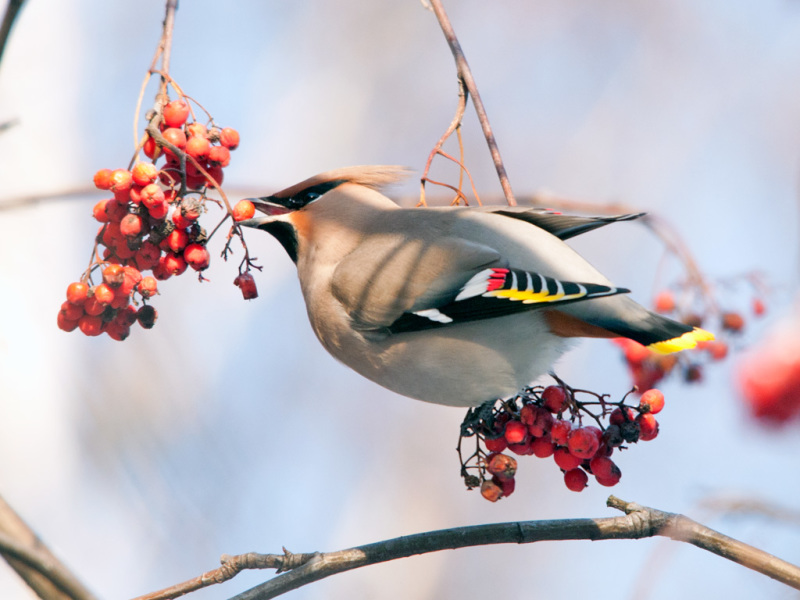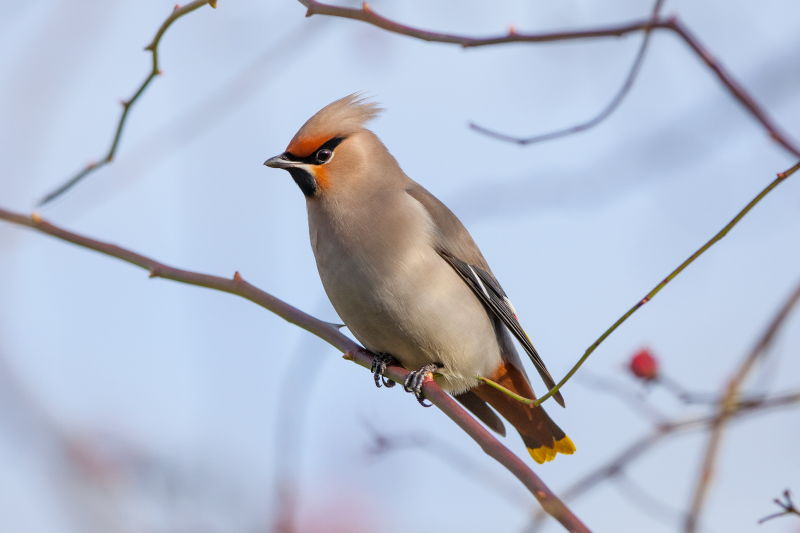Colours
Distinguishing features
It is short-tailed, mainly brownish-grey, and has a conspicuous crest on its head. The male of the nominate subspecies has a black mask through the eye and a black throat. There is a white streak behind the bill and a white curve below the eye. The lower belly is a rich chestnut colour and there are cinnamon-coloured areas around the mask. The rump is grey and the tail ends in a bright yellow band with a broad black border above it. The wings are very distinctive; the flight feathers are black and the primaries have markings that produce a yellow stripe and white "fishhooks" on the closed wing. The adult's secondaries end in long red appendages with the sealing wax appearance that gives the bird its English name. The eyes are dark brown, the bill is mainly black, and the legs are dark grey or black. (Wikipedia)
Size
- From 19 cm to 23 cm (Length of specimen) - applies to Adults
Wingspan
- From 32 cm to 35.5 cm - applies to Adults
Synonyms
Distribution
Distribution and habitat preferences
It is migratory with much of the breeding range abandoned as the birds move south for the winter. Migration starts in September in the north of the range, a month or so later farther south. Eurasian birds normally winter from eastern Britain through northern parts of western and central Europe, Ukraine, Kazakhstan and northern China to Japan. North American breeders have a more southeasterly trend, many birds wintering in southeast Canada, with smaller numbers in the north central and northeastern US states. Birds do not usually return to the same wintering sites in successive years. (Wikipedia)
Audio recordings
Recorded at Nabesna Road, Valdez-Cordova Borough, Alaska in United States.
© Andrew Spencer
(source)
Diet
Waxwings are primarily fruit eaters, but also consume insects during the breeding season. Mosquitoes and midges are the most common prey, but many other insects and some spiders are eaten. They are caught mainly by flycatching from an open perch, but some may be picked off vegetation. (Wikipedia)



